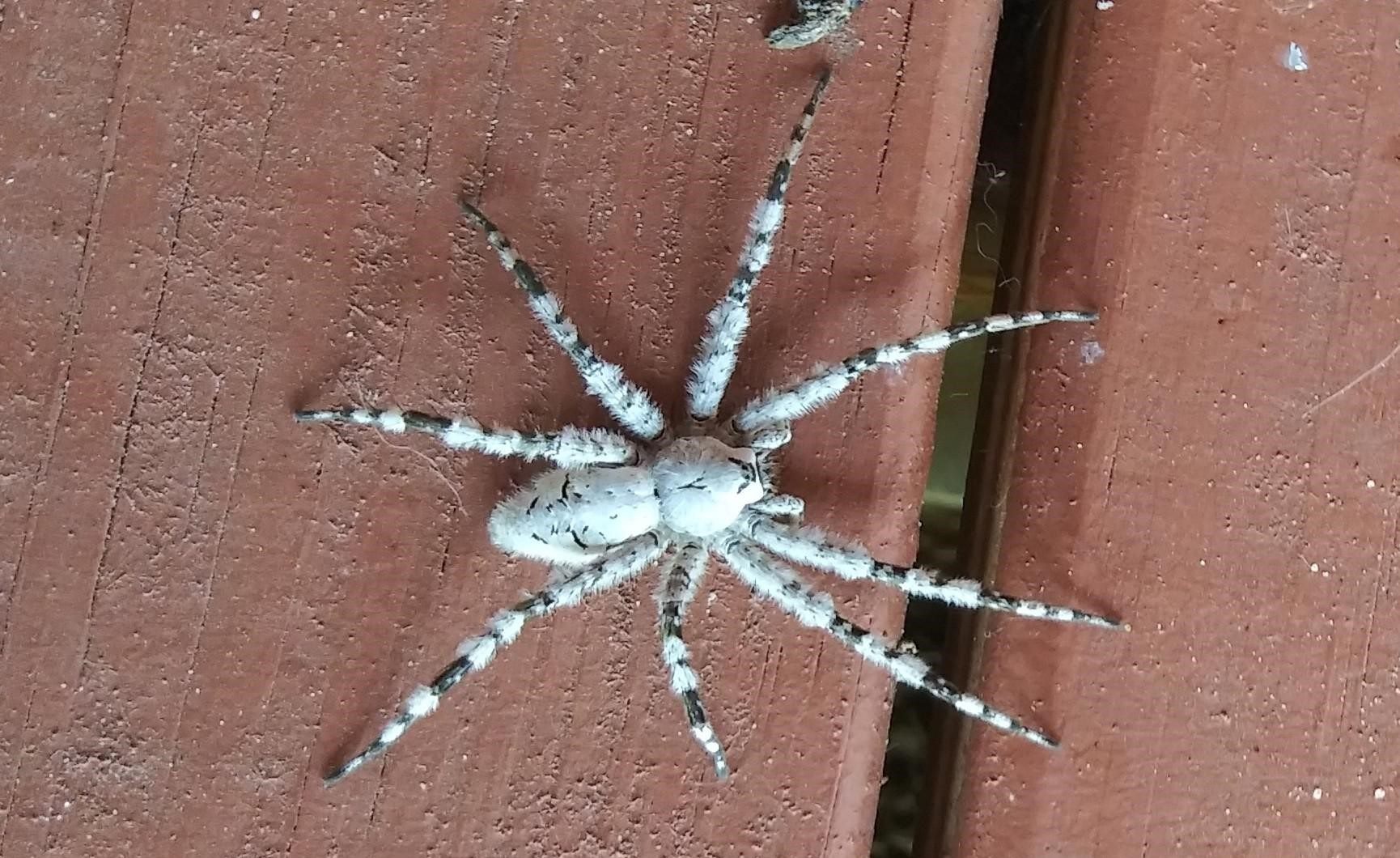
The White-banded Fishing Spider is a fascinating creature that dwells in freshwater habitats across North America. Also known as Dolomedes albineus, this arachnid boasts a distinctive appearance and an array of impressive skills. With its white band markings and incredible ability to walk on water, this spider has captured the attention of many nature enthusiasts and arachnologists alike. In this article, we will delve into the captivating world of the White-banded Fishing Spider and explore 15 intriguing facts about this remarkable species. From its hunting techniques and habitat preferences to its unique physical characteristics and behavior, get ready to uncover the secrets of this extraordinary arachnid. So, let’s embark on a thrilling journey into the world of the White-banded Fishing Spider and discover the wonders that make it so captivating!
Key Takeaways:
- The White-banded Fishing Spider is a skilled hunter that preys on aquatic insects, using its unique ability to walk on water and its powerful venom to subdue its prey.
- With its excellent eyesight and nocturnal hunting behavior, the White-banded Fishing Spider plays a crucial role in maintaining the balance of the ecosystem by controlling insect populations and serving as a food source for larger predators.
The White-banded Fishing Spider is also known as the Dolomedes albineus.
The White-banded Fishing Spider is a species of spider that belongs to the family Pisauridae. It is commonly found in North America, particularly in the southeastern regions. With its distinctive white bands on its dark brown or black body, this spider is easily recognizable.
It is a skilled hunter that mainly preys on aquatic insects.
The White-banded Fishing Spider gets its name from its hunting technique. It is known for its ability to walk on water and catch prey that is found near or on the water’s surface. It uses its long legs to move swiftly across the water, making it an excellent aquatic predator.
This spider is quite large compared to other spider species.
The White-banded Fishing Spider can reach a leg span of up to 3-4 inches, making it one of the largest spiders in North America. Its size allows it to capture and subdue larger prey, ensuring its survival in its natural habitat.
They are not aggressive towards humans.
While the White-banded Fishing Spider may look intimidating due to its size, it is not aggressive towards humans. It prefers to avoid confrontation and will only bite if it feels threatened or cornered. Its venom is not dangerous to humans and is rarely a cause for concern.
They have excellent eyesight.
The White-banded Fishing Spider has eight eyes arranged in two rows on its head. This gives it excellent vision, both in the water and on land. Its keen eyesight helps it spot potential prey and navigate its surroundings with precision.
They build silk retreats near water sources.
The White-banded Fishing Spider constructs silk retreats near the water’s edge. These retreats act as safe havens where the spider can rest and wait for prey. They are often located in vegetation or crevices, providing the spider with protection and camouflage.
They are adept swimmers.
Not only can the White-banded Fishing Spider walk on water, but it is also a skilled swimmer. It uses its legs to paddle through the water, allowing it to easily navigate its aquatic environment. This ability gives it an advantage when hunting in or around bodies of water.
The females carry their egg sacs with them.
After mating, the female White-banded Fishing Spider will create an egg sac and carry it with her until the eggs are ready to hatch. She will often attach the sac to her spinnerets or hold it between her legs. This behavior ensures the safety and protection of the developing spiderlings.
They have a lifespan of about one year.
The White-banded Fishing Spider typically lives for about a year. During this time, it goes through different stages of development, including molting to shed its old exoskeleton as it grows. It spends most of its life near water sources, where it can find an abundance of food.
They possess powerful venom.
While the White-banded Fishing Spider’s venom is not harmful to humans, it is potent enough to subdue its prey. Its venom contains enzymes that help break down the prey’s tissues and immobilize it. The spider then injects digestive juices into the prey, allowing it to consume its meal more easily.
They are nocturnal hunters.
The White-banded Fishing Spider is primarily active during the night. It uses its excellent vision and hunting skills to hunt for prey under the cover of darkness. This nocturnal behavior helps it avoid potential predators and increases its chances of a successful hunt.
They are solitary creatures.
The White-banded Fishing Spider is a solitary creature, usually found living alone in its territory. It does not typically exhibit social behavior or live in colonies. However, during the mating season, males may seek out females to mate with.
They have a widespread distribution.
The White-banded Fishing Spider can be found in various states across North America, including Florida, Georgia, Mississippi, Alabama, and South Carolina. It prefers habitats near freshwater sources such as swamps, ponds, and marshes.
They use vibrations to locate their prey.
When hunting, the White-banded Fishing Spider uses vibrations on the water’s surface to detect the movement of its prey. It is highly sensitive to these vibrations and can quickly determine the location of potential meals, allowing it to strike with precision.
They are an important part of the ecosystem.
The White-banded Fishing Spider plays a crucial role in maintaining the balance of the ecosystem. By preying on insects and other small aquatic creatures, it helps control their populations. It also serves as a food source for larger predators, contributing to the overall biodiversity of its habitat.
Conclusion
The white-banded fishing spider is a fascinating creature that captivates the imagination with its unique features and behaviors. Its ability to walk on water, mimic tree bark, and catch prey in such a strategic manner make it a truly remarkable species. The spider’s white-banded pattern adds to its allure, distinguishing it from other spiders in the arachnid world. Whether you encounter one in the wild or simply appreciate its beauty from afar, the white-banded fishing spider is definitely a captivating creature worth learning about.
FAQs
Q: Where can the white-banded fishing spider be found?
A: The white-banded fishing spider is primarily found in the southeastern regions of the United States, particularly in areas with still or slow-moving bodies of water like swamps, ponds, and marshes.
Q: How big can the white-banded fishing spider grow?
A: Adult female white-banded fishing spiders can measure up to 1.5 inches in body length, while males are slightly smaller, reaching about 1 inch in length.
Q: What does the diet of the white-banded fishing spider consist of?
A: As the name suggests, the white-banded fishing spider primarily feeds on aquatic insects, small fish, tadpoles, and even small frogs that venture close to the water’s edge.
Q: Are white-banded fishing spiders venomous?
A: Yes, white-banded fishing spiders are venomous like most spiders. However, their bite is not considered dangerous to humans and is usually only used for subduing their prey.
Q: Can white-banded fishing spiders walk on water?
A: Yes, due to specialized leg structures and the presence of tiny hairs that help disperse their weight, white-banded fishing spiders can skillfully walk on the surface of water with ease.
Was this page helpful?
Our commitment to delivering trustworthy and engaging content is at the heart of what we do. Each fact on our site is contributed by real users like you, bringing a wealth of diverse insights and information. To ensure the highest standards of accuracy and reliability, our dedicated editors meticulously review each submission. This process guarantees that the facts we share are not only fascinating but also credible. Trust in our commitment to quality and authenticity as you explore and learn with us.


